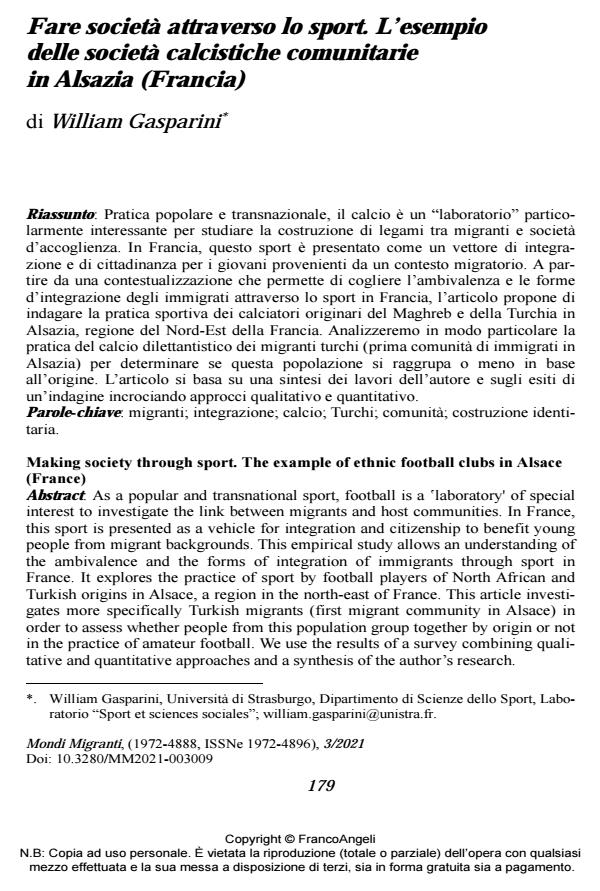Making society through sport. The example of ethnic football clubs in Alsace (France)
Journal title MONDI MIGRANTI
Author/s William Gasparini
Publishing Year 2021 Issue 2021/3
Language Italian Pages 20 P. 179-198 File size 334 KB
DOI 10.3280/MM2021-003009
DOI is like a bar code for intellectual property: to have more infomation
click here
Below, you can see the article first page
If you want to buy this article in PDF format, you can do it, following the instructions to buy download credits

FrancoAngeli is member of Publishers International Linking Association, Inc (PILA), a not-for-profit association which run the CrossRef service enabling links to and from online scholarly content.
As a popular and transnational sport, football is a ʽlaboratory' of special interest to investigate the link between migrants and host communities. In France, this sport is presented as a vehicle for integration and citizenship to benefit young people from migrant backgrounds. This empirical study allows an understanding of the ambivalence and the forms of integration of immigrants through sport in France. It explores the practice of sport by football players of North African and Turkish ori-gins in Alsace, a region in the north-east of France. This article investigates more specifically Turkish migrants (first migrant community in Alsace) in order to assess whether people from this population group together by origin or not in the prac-tice of amateur football. We use the results of a survey combining qualitative and quantitative approaches and a synthesis of the author’s research.
Keywords: migrants; integration; football; Turkish; community; identity building.
William Gasparini, Fare società attraverso lo sport. L’esempio delle società calcistiche comunitarie in Alsazia (Francia) in "MONDI MIGRANTI" 3/2021, pp 179-198, DOI: 10.3280/MM2021-003009